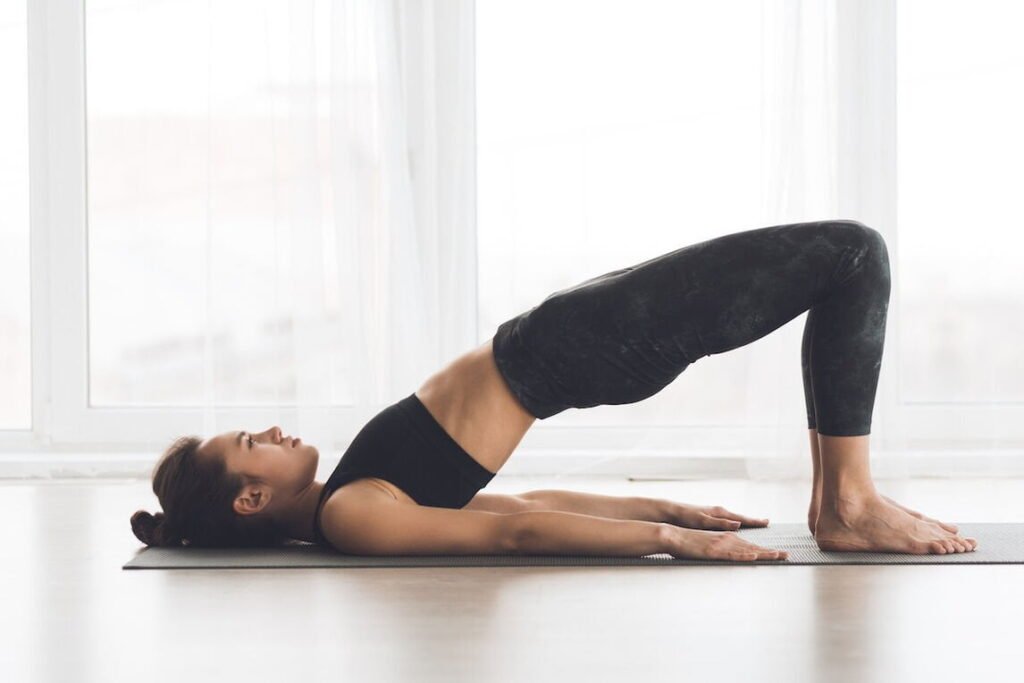Setu Bandhasana Yoga: A Comprehensive Guide to Bridge Pose for Optimal Health
Introduction
Setu Bandhasana Yoga, commonly known as Bridge Pose, is a rejuvenating yoga posture that offers numerous benefits for the mind, body, and soul. Derived from the Sanskrit words “setu” (meaning bridge) and “bandha” (meaning lock or bond), this asana is an integral part of yoga practice, promoting strength, flexibility, and inner balance. In this article, we will explore the steps, benefits, variations, and precautions associated with Setu Bandhasana, allowing you to enhance your well-being through this incredible yoga posture.
How to Perform Setu Bandhasana Yoga
To practice Setu Bandhasana, follow these step-by-step instructions:
Step 1: Lie on your back on a yoga mat with your knees bent and feet flat on the floor, hip-distance apart.
Step 2: Place your arms alongside your body, with your palms facing down.
Step 3: Gently press your feet into the floor, engaging your glutes and core muscles.
Step 4: Inhale deeply and slowly lift your hips off the mat, while keeping your feet and shoulders grounded.
Step 5: Interlace your fingers beneath your body and gently roll your shoulders underneath, creating a slight lift in the chest.
Step 6: Maintain the position for 30-60 seconds, breathing deeply and evenly.
Step 7: Exhale slowly as you release your hands and lower your hips back down to the mat.
Benefits of Setu Bandhasana Yoga
Practicing Setu Bandhasana Yoga regularly can yield a wide array of benefits, including:
a. Strengthens the Back and Legs: Setu Bandhasana engages the muscles of the back, legs, and glutes, thereby strengthening and toning these areas.
b. Opens the Chest and Shoulders: The posture stretches the chest and shoulders, relieving tension and promoting better posture.
c. Enhances Spinal Flexibility: Bridge Pose improves the flexibility of the spine, increasing its range of motion and reducing the risk of back pain.
d. Calms the Mind: This asana has a soothing effect on the nervous system, promoting relaxation and reducing stress and anxiety.
e. Stimulates the Thyroid Gland: The gentle pressure on the throat area in Setu Bandhasana Yoga stimulates the thyroid gland, which regulates metabolism.
f. Improves Digestion: The pose helps massage the abdominal organs, promoting better digestion and relieving digestive issues.

Variations of Setu Bandhasana Yoga
To add variety and challenge to your practice, consider trying these variations of Setu Bandhasana:
a. One-Legged Bridge Pose: Lift one leg straight up towards the ceiling while holding the bridge position, engaging your core and leg muscles.
b. Supported Bridge Pose: Place a yoga block or bolster beneath your sacrum to provide support and deepen the stretch.
c. Wheel Pose (Chakrasana): For more advanced practitioners, Wheel Pose takes Setu Bandhasana to the next level, requiring increased flexibility and strength.
Precautions and Contraindications:
While Setu Bandhasana Yoga is generally safe for most people, it is essential to keep the following precautions in mind:
a. Avoid practicing this pose if you have any recent neck or back injuries, or if you experience severe pain or discomfort during the posture.
b. If you have a pre-existing medical condition or are pregnant, consult with a qualified yoga instructor or healthcare professional before attempting Setu Bandhasana.
c. Always listen to your body and modify or skip the pose if it causes any strain or discomfort.
Conclusion
Setu Bandhasana Yoga, or Bridge Pose, is an invigorating yoga posture that offers a multitude of benefits for your physical, mental, and emotional well-being. By incorporating this asana into your regular yoga practice, you can experience increased strength, flexibility, and a calm mind. Remember to practice with proper alignment, respect your body’s limits, and enjoy the transformative power of Setu Bandhasana.





